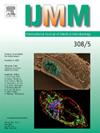Nanopore-targeted sequencing: A new and effective technique for the diagnosis of non-tuberculous mycobacteria pulmonary disease
IF 3.6
3区 医学
Q1 MICROBIOLOGY
引用次数: 0
Abstract
Non-tuberculous mycobacteria pulmonary disease (NTM-PD) has become a significant public health issue threatening human health in recent years. Traditional mycobacterial culture is complex, time-consuming, and unable to identify NTM at the species level. Nanopore-targeted sequencing (NTS) is a novel molecular detection technology that integrates the high sensitivity of targeted multiplex PCR with the high specificity of third-generation long-read sequencing. NTS has significant advantages in diagnosing, precise differentiation of mixed infection pathogens and antibiotic resistance genes in infectious diseases. The present study compared the diagnostic performance of NTS with fluorescence-stained smears and BACTEC 960 culture in NTM-PD. In respiratory specimens from suspected NTM-PD individuals, NTS exhibited a sensitivity of 88.2 %, significantly higher than culture (74.0 %) and smears (37.8 %) (both P < 0.05). The AUC for NTS was 0.893, surpassing that of culture (0.869) and smears (0.605). The sensitivity varied among respiratory specimens: bronchoalveolar lavage fluid (BALF) 90.1 %, sputum 78.6 %, and lung puncture fluid 50.0 %. The NTS sensitivity and specificity for predicting resistance to amikacin and clarithromycin were 42.9 %, 35.5 % and 98.8 %, 98.3 %, respectively. Compared to culture and smears, NTS demonstrated higher sensitivity, with slightly lower specificity than culture. However, its predictive value for drug-resistant mycobacteria is limited. BALF specimens exhibit maximal sensitivity among different respiratory samples. Taken together, NTS is a novel, rapid, and efficient molecular diagnostic method for NTM-PD.
纳米孔靶向测序:一种诊断非结核分枝杆菌肺病的有效新技术
近年来,非结核分枝杆菌肺病(NTM-PD)已成为威胁人类健康的重大公共卫生问题。传统的分枝杆菌培养是复杂的,耗时的,并且无法在物种水平上识别NTM。纳米孔靶向测序(NTS)是一种将靶向多重PCR的高灵敏度与第三代长读测序的高特异性相结合的新型分子检测技术。NTS在传染病混合感染病原菌和耐药基因的诊断、精准鉴别方面具有显著优势。本研究比较了NTS与荧光染色涂片和BACTEC 960培养在NTM-PD中的诊断性能。在疑似NTM-PD患者的呼吸道标本中,NTS的敏感性为88.2 %,显著高于培养(74.0 %)和涂片(37.8 %)(P均为 <; 0.05)。NTS的AUC为0.893,高于培养(0.869)和涂片(0.605)。不同呼吸道标本的敏感性不同:支气管肺泡灌洗液(BALF) 90.1 %,痰液78.6% %,肺穿刺液50.0 %。NTS预测阿米卡星和克拉霉素耐药的敏感性和特异性分别为42.9% %、35.5% %和98.8% %、98.3% %。与培养和涂片相比,NTS表现出更高的敏感性,特异性略低于培养。然而,其对耐药分枝杆菌的预测价值有限。BALF标本在不同的呼吸样本中表现出最大的敏感性。综上所述,NTS是一种新型、快速、高效的NTM-PD分子诊断方法。
本文章由计算机程序翻译,如有差异,请以英文原文为准。
求助全文
约1分钟内获得全文
求助全文
来源期刊
CiteScore
9.70
自引率
0.00%
发文量
18
审稿时长
45 days
期刊介绍:
Pathogen genome sequencing projects have provided a wealth of data that need to be set in context to pathogenicity and the outcome of infections. In addition, the interplay between a pathogen and its host cell has become increasingly important to understand and interfere with diseases caused by microbial pathogens. IJMM meets these needs by focussing on genome and proteome analyses, studies dealing with the molecular mechanisms of pathogenicity and the evolution of pathogenic agents, the interactions between pathogens and host cells ("cellular microbiology"), and molecular epidemiology. To help the reader keeping up with the rapidly evolving new findings in the field of medical microbiology, IJMM publishes original articles, case studies and topical, state-of-the-art mini-reviews in a well balanced fashion. All articles are strictly peer-reviewed. Important topics are reinforced by 2 special issues per year dedicated to a particular theme. Finally, at irregular intervals, current opinions on recent or future developments in medical microbiology are presented in an editorial section.

 求助内容:
求助内容: 应助结果提醒方式:
应助结果提醒方式:


